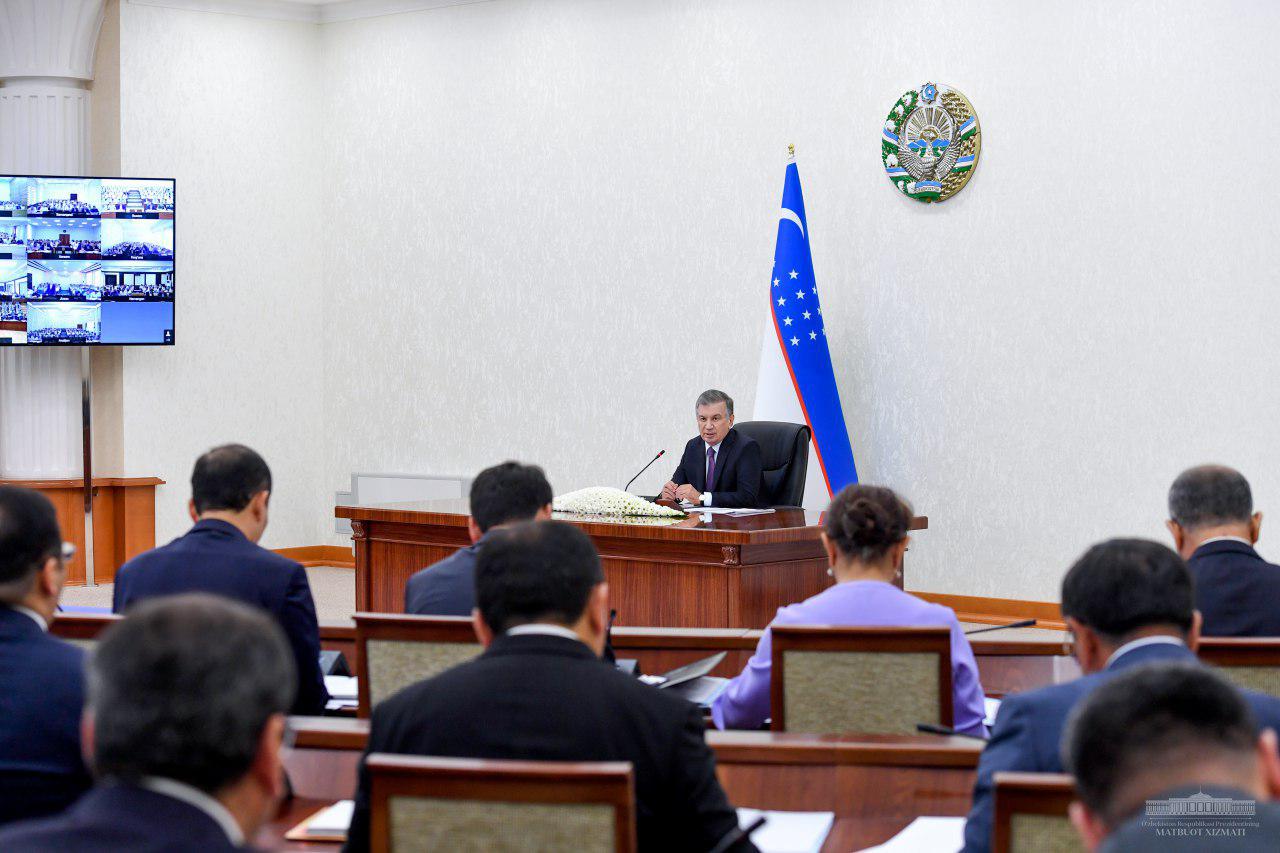Extra tasks defined to boost manufacturing industry in Tashkent region

On June 26, President of the Republic of Uzbekistan Shavkat Mirziyoyev chaired a videoconference meeting to discuss industrial development in the regions, the implementation of new projects based on unused buildings and lands.
Earlier, at a meeting on June 7, works on this front were analyzed on the example of the Andijan region. This time around, the session participants considered issues of effective utilization of the Tashkent province potential.
The capital region is among areas most favorable for attracting foreign investment. All towns and districts in the region have access to sufficient electricity reserves. The road infrastructure for the delivery of products to the main consumer markets is also well developed.
However, the rate of production of consumer goods per capita in some areas of the region is 2-3 times lower than the national average. The share of enterprises in the regional industrial output is only 15 percent. In such districts as Buka, Akkurgan, Ahangaran, Parkent, Pskent and Kuyichirchik, the industry is far behind in development.
Earlier this month, during the trip of the President to the region, a program for 2019-2020 was worked out, providing for the implementation of about 800 projects worth 40 trillion 300 billion soums. Of these, more than 300 projects are designated for industry.
At the same time, taking into account the available reserves, the Working Group on the Integrated Industrial Development in Regions has elaborated an additional 310 projects for the years 2019-2022.
The presentation of these projects took place at the meeting. Thus, taking into account the program and additional projects approved in early June, it is planned to realize 636 industrial projects in the amount of almost 51 trillion soums during 2019-2022.
Within the framework of these projects, by mastering $ 4.2 billion of foreign direct investment, it is planned to almost double the volume of industrial production, and increase the incomes of the population 2.1 times. This would help create over 51 thousand permanent jobs.
Each project was considered at the videoconference session in the context of industries, towns and districts, commercial banks. Responsible officials were instructed to work out schedules for specified industrial projects and put them into operation within the designated time frame.
More than half, namely, 60 percent of the projects proposed toward the development of the regional industry are due to be commissioned in buildings and on land plots that have access to infrastructure but are currently empty.

The State Assets Management Agency was instructed to carry out, together with interested ministries and agencies, stock taking of all inefficiently used buildings and land areas, to sell the released facilities to entrepreneurs through an auction or at “zero” value under investment obligations, or organize small industrial zones on their basis.
The President pointed out issues that prevent the effective use of privatized objects faced by their owners. Shavkat Mirziyoyev indicated the need to assist entrepreneurs in the elimination of those barriers. The meeting participants comprehensively addressed the issue of effective use of the potential of free economic and small industrial zones.
In our country, 21 free economic and 150 small industrial zones have been organized, which house almost 1.7 thousand small enterprises today. However, some of them are not sufficiently provided with engineering and communication networks.
Resolution of the President of the Republic of Uzbekistan on measures to further improve the coordination and management of the activities of small industrial zones, signed June 21 this year, defines measures to improve conditions and remove drawbacks in these areas. This turned out to be very useful for small industrial zones across the country, in particular in the Tashkent region.
The meeting helped identify objectives for the industrial development in the capital region, mobilize new capacities based on vacant facilities. Liable officials were instructed to devise additional projects for the development of industry in the Republic of Karakalpakstan and regions on the basis of this system.
In addition, the state of development of foreign direct investment by industry and region was critically analyzed. Special attention was paid to the organization of competitive industries, taking into account international best practices, to the promotion of exports of products and services, advancement of logistics and ensuring entry into new markets.


















